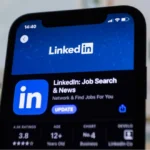Right, so I recently had a fascinating chinwag with Michael, a customer experience guru, about how businesses are leveraging Facebook Messenger to not only generate new business but also provide stellar customer service. What really stood out was his emphasis on creating a seamless handover experience when things get a little too complicated for the chatbot. You know, those moments when a customer is tearing their hair out and needs a real, live human to understand their unique issue.
It all boils down to this: your Messenger strategy needs to be more than just a fancy chatbot; it needs a well-oiled machine that blends AI efficiency with genuine human empathy. Michael stressed that a clunky chatbot-to-agent transition can absolutely shatter customer trust and tank your brand reputation faster than you can say ‘unsubscribe’.
So, How Do You Pull Off a Smooth Handover?
Michael explained it’s all about three key components:
-
Context is King: “Imagine,” he said, “having to repeat your entire problem to a new person after already spending ages explaining it to a chatbot. Infuriating, right?” He’s spot on. The secret sauce is making sure the live agent has all the relevant information from the chatbot interaction before they jump in. That means the entire chat log, any submitted forms, and even the customer’s overall history with your company should be readily available. The system should automatically attach this information to the live agent session, minimising the customer’s frustration and enabling the agent to address the issue much more efficiently. Think of it as handing the agent a complete case file before they walk into the meeting.
-
Handover Methods That Make Sense: Not all problems are created equal, so your handover method shouldn’t be either. Michael highlighted the importance of skill-based routing. This means directing the customer to the agent best equipped to handle their specific issue. For example, a question about order tracking should go to the delivery specialist, while a technical glitch needs to find its way to the tech support team. Setting up this routing logic within your CRM and integrating it with your Messenger chatbot is essential. This streamlines the process, reducing resolution times, and boosting customer satisfaction.
-
Communicate Clearly: Transparency is key. When the chatbot is struggling to resolve the issue, it should explicitly tell the customer that it’s transferring them to a live agent. No vague statements, just a clear message like, “I’m unable to resolve this. Connecting you to a live agent now who can help further”. It’s also helpful to set expectations about wait times. A simple “Please expect a short wait time while I connect you to an agent” can make a world of difference. Honesty builds trust.
Beyond Handover: Innovative Facebook Engagement
While seamless handovers are crucial for support, Michael also had some clever ideas about using Facebook to proactively generate business. He really emphasised understanding the target audience deeply, and not just from a marketing perspective. It’s about truly understanding their needs, their pain points, and what kind of content resonates with them. Only then can you craft engaging campaigns that actually convert.
One example he gave was running interactive quizzes or polls related to your product or service. These quizzes can not only be fun and engaging but also provide valuable insights into customer preferences. Then, you can use this information to tailor offers and messaging.
Another tactic Michael mentioned was creating behind-the-scenes content. People love seeing the human side of a business. Showcasing your team, sharing your company culture, and giving customers a glimpse into your processes can build trust and foster a stronger connection. Videos are particularly effective for this. Short, informal videos demonstrating product use cases or addressing common customer questions can be a great way to build rapport.
Finally, Michael suggested actively monitoring relevant Facebook groups and pages related to your industry. By participating in conversations, answering questions, and offering valuable advice, you can establish yourself as a thought leader and attract new customers. Just remember to be authentic and avoid being overly promotional. It’s about adding value, not just selling.
Ultimately, Michael painted a picture of Messenger as so much more than just a messaging app. It’s a dynamic platform for engaging with customers, providing top-notch support, and driving new business. The critical part is focusing on that human touch and that means smooth transitions to live agents when things get tricky, truly understanding the customer, and creating compelling content that resonates.











